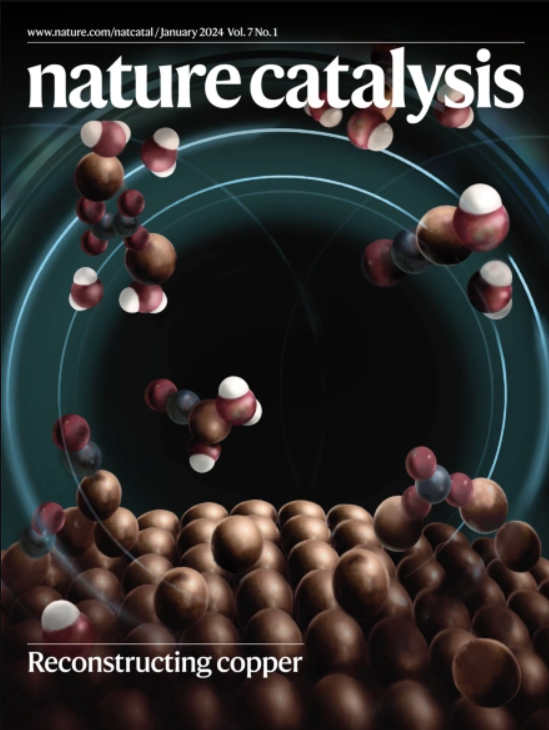Oxygen matters
IF 44.6
1区 化学
Q1 CHEMISTRY, PHYSICAL
引用次数: 0

氧气的重要
现在,Chris-Kriton Skylaris 及其同事与南安普顿大学和庄信万丰公司合作,通过计算手段研究了氧化效应对铂纳米粒子 (NP) ORR 的影响。为此,他们使用最近开发的 MACE-MP-0 机器学习原子间势进行了大规范最小化蒙特卡洛模拟。研究人员获得了铂纳米粒子在每个给定电压下最稳定的氧含量,并推导出火山图,将速率决定步骤和起始过电位与每个氧含量联系起来。因此,这些结果既是热力学考虑的结果,也是由于氧化物的存在而产生的位阻效应的结果。我们通过删除能分析详细研究了后一种效应,该分析揭示了表面氧化物种类的异质性。此外,还发现 d 波段中心随氧含量的变化而移动,突出了两种截然不同的状态,这与氧含量较高时氧化物相的形成有关。最后,得出了一个包含上述考虑因素的动力学模型。
本文章由计算机程序翻译,如有差异,请以英文原文为准。
求助全文
约1分钟内获得全文
求助全文
来源期刊

Nature Catalysis
Chemical Engineering-Bioengineering
CiteScore
52.10
自引率
1.10%
发文量
140
期刊介绍:
Nature Catalysis serves as a platform for researchers across chemistry and related fields, focusing on homogeneous catalysis, heterogeneous catalysis, and biocatalysts, encompassing both fundamental and applied studies. With a particular emphasis on advancing sustainable industries and processes, the journal provides comprehensive coverage of catalysis research, appealing to scientists, engineers, and researchers in academia and industry.
Maintaining the high standards of the Nature brand, Nature Catalysis boasts a dedicated team of professional editors, rigorous peer-review processes, and swift publication times, ensuring editorial independence and quality. The journal publishes work spanning heterogeneous catalysis, homogeneous catalysis, and biocatalysis, covering areas such as catalytic synthesis, mechanisms, characterization, computational studies, nanoparticle catalysis, electrocatalysis, photocatalysis, environmental catalysis, asymmetric catalysis, and various forms of organocatalysis.
 求助内容:
求助内容: 应助结果提醒方式:
应助结果提醒方式:


